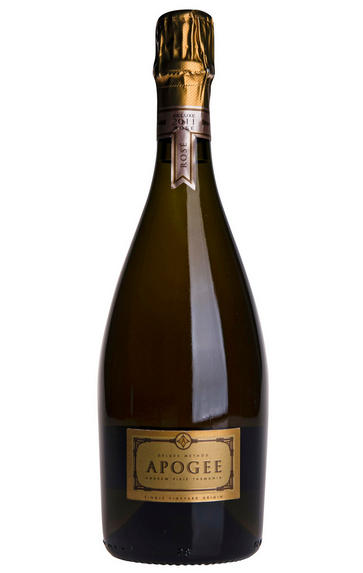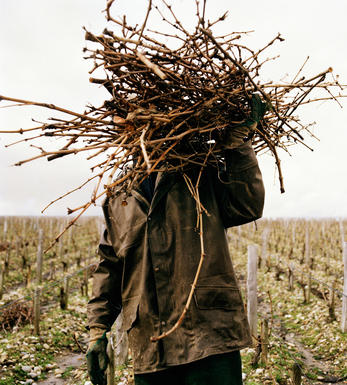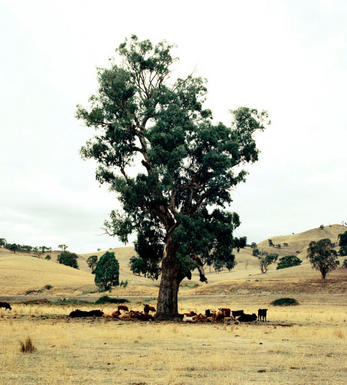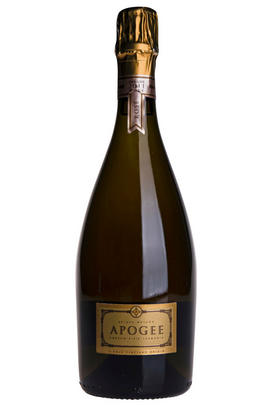
About this WINE

Apogee Winery
Dr Andrew Pirie, founder and winemaker at Apogée, has been the most influential figure in the Tasmanian wine industry over the past four decades. With Australia's first PhD in Viticulture, he initiated and built some of Tasmania's largest and most important vineyards and wineries including Pipers Brook Vineyard, Ninth Island, which he co-founded with his brother David in 1974, and Pirie sparkling in 1999.
After leaving Piper’s Brook in 2003, Dr Pirie continued to put his extensive research into wine climates into practise. He planted the Apogée vineyard after his studies of the site showed its potential, especially for sparkling wine production
Apogée means the’ highest point’ and the name represents what Andrew hopes will be the culmination of 40 years of choosing sites and developing vineyards.
There is a distinct philosophy behind the project: firstly the wines will always be from the Apogée single vineyard, to fully reflect its terroir alongside the extensive viticultural work that has taken place at the site.
Secondly, the size of the site has been deliberately limited to two hectares, which is the average size of a holding in Champagne. This is to test Andrew’s theory that scale is fundamentally important in the search for the highest quality. Production is therefore limited to between 10,000 and 20,000 bottles per year and Andrew has no intention to increase this.
All the sparkling wine is disgorged on the property. The main production is a classically blended sparkling (always vintage) comprising around 35% Pinot Noir and 40% Chardonnay, with the balance from Pinot Meunier (this is the Deluxe Vintage Brut). A Deluxe Vintage Rosé is also produced made up of around 90% Pinot Noir from the best sites, and 10% Chardonnay.
The goal is to produce very high quality wines from a small, hand tended area which is operated on a commercial and sustainable basis. Andrew Pirie believes that the combination of the highly researched site with the latest knowledge of terroir theory results in wines which are very expressive of their origin.
Apogée was awarded Tasmanian Vineyard of the Year Award in 2013. We are delighted that Berry Bros. & Rudd has the honour of introducing these wines to the UK on an exclusive basis.

Tasmania
Tasmania is better known as Australia’s ‘freezer’ on account of its cool climate. Wines were momentarily made there in 1826 before re-emerging in the 1960s and 1970s with plantings near Launceston and Hobart; 1974 saw the famous Pipers Brook area put on the map by Dr Andrew Pirie. Since 1994, the small industry (approximately 1,000 hectares) has developed as the corporates have taken a renewed interest in the quality of its Chardonnay and Pinot Noir, particularly sparkling wines. Increasingly, some of the 250 growers are, as Tasmania’s climate warms up, beginning to bottle their own wines.
The region (Tasmania being viewed as a single wine zone) is spread over two distinct, if not officially recognised, sub-regions: the cooler, north-eastern zone around Launceston, focused on the Tamar River Valley and Pipers Brook area, and the warmer southern zone around the Derwent River Valley, north-west of Hobart.
Pipers Brook is the coolest spot due to the icy influence of the Bass Strait, its north-eastern location at the island’s tip at 120 metres above sea level, and exposure to the Roaring Forties winds. Further west the weather is warmer, lower (80 metres above sea level) and more humid around Launceston; typically the harvest there is two weeks ahead of Pipers Brook. The southern, Derwent area is warmer still, on account of its low-lying (60m) shelter from the prevailing winds and rain. The soils vary from the deep, iron-rich, gravely clay in the north to the thinner, sandstone-based soils of the south.
Pinot Noir is increasingly grown to make fine, suave table wines, rather than simply as a sparkling constituent along with Chardonnay. Given the island’s southerly latitude, UV levels are similar to New Zealand’s’s, giving deep colours and pungent aromatics, especially for the up-and-coming Rieslings. Cabernet Sauvignon is found in the south, if a marginal variety.
Recommended producers: Stoney Rise, Apsley Gorge and Domaine A are top-class producers. Jansz is a reliable source of sparkling wines.

Pinot Noir
Pinot Noir is probably the most frustrating, and at times infuriating, wine grape in the world. However when it is successful, it can produce some of the most sublime wines known to man. This thin-skinned grape which grows in small, tight bunches performs well on well-drained, deepish limestone based subsoils as are found on Burgundy's Côte d'Or.
Pinot Noir is more susceptible than other varieties to over cropping - concentration and varietal character disappear rapidly if yields are excessive and yields as little as 25hl/ha are the norm for some climats of the Côte d`Or.
Because of the thinness of the skins, Pinot Noir wines are lighter in colour, body and tannins. However the best wines have grip, complexity and an intensity of fruit seldom found in wine from other grapes. Young Pinot Noir can smell almost sweet, redolent with freshly crushed raspberries, cherries and redcurrants. When mature, the best wines develop a sensuous, silky mouth feel with the fruit flavours deepening and gamey "sous-bois" nuances emerging.
The best examples are still found in Burgundy, although Pinot Noir`s key role in Champagne should not be forgotten. It is grown throughout the world with notable success in the Carneros and Russian River Valley districts of California, and the Martinborough and Central Otago regions of New Zealand.



Buying options
Add to wishlist
Description
Made from 90% Pinot Noir fruit which has been exclusively sourced from the cool climate of Piper Brook in Tasmania. The wine has a very delicate pink colour complemented by a very fine mousse. With very subtle flavours of strawberry and red cherry on the nose. The rich palate and notes of brioche are well balanced with a grapefruit like acidity.
Stuart Fyfe, Personal Wine Advisor
wine at a glance
Delivery and quality guarantee